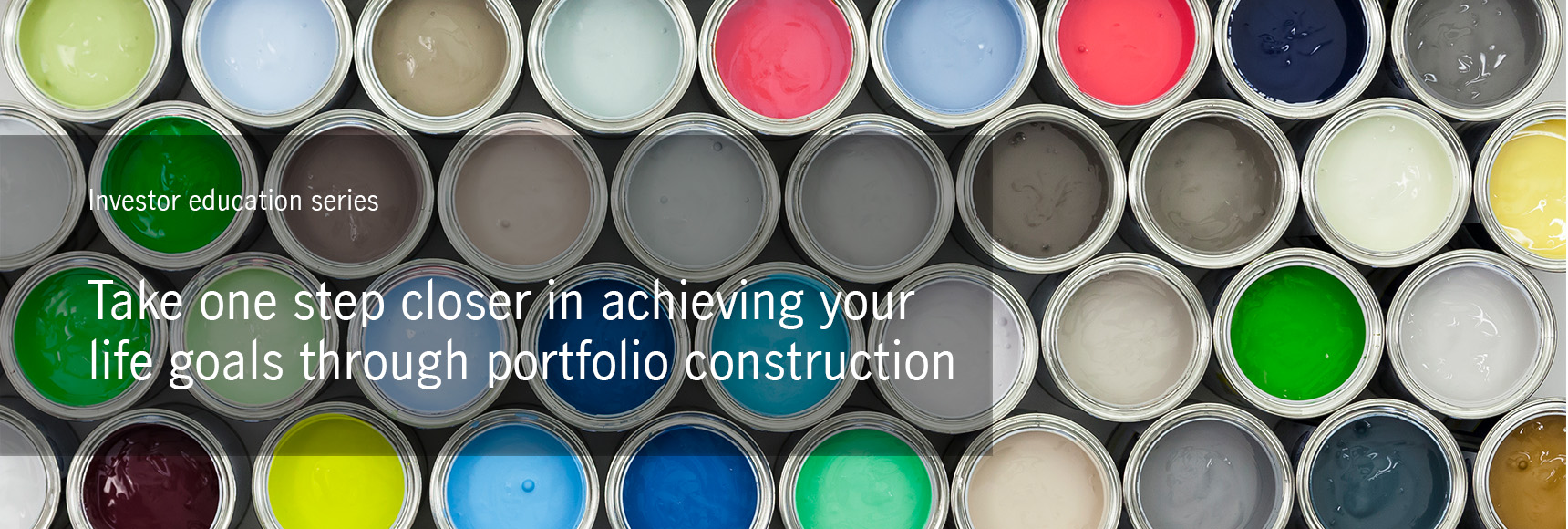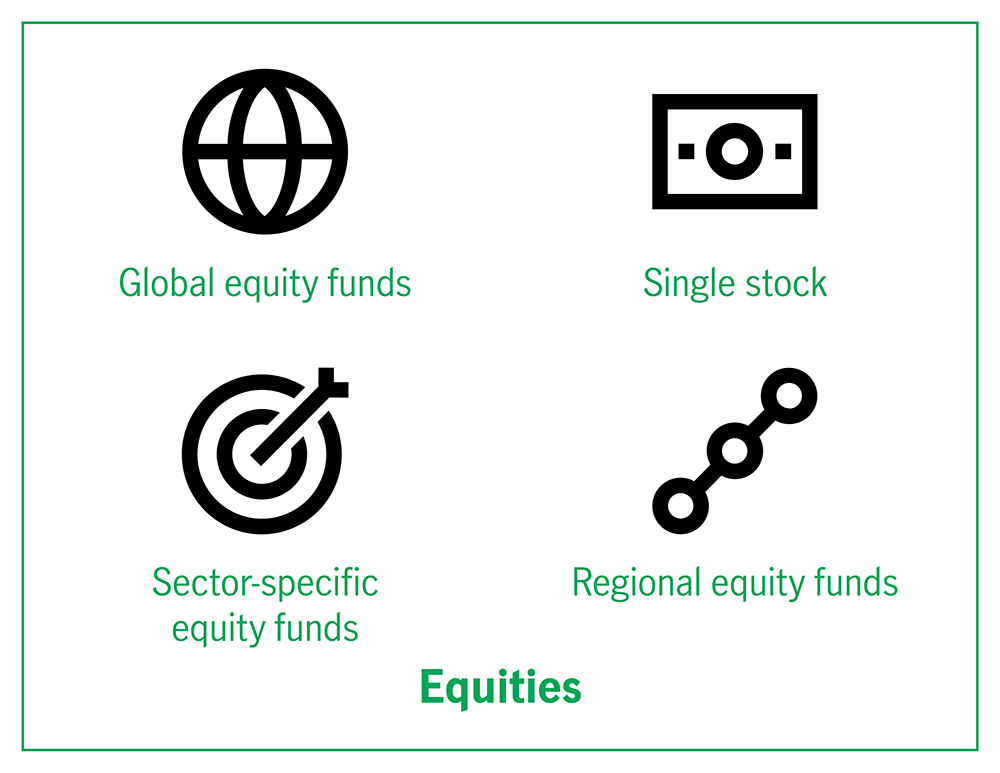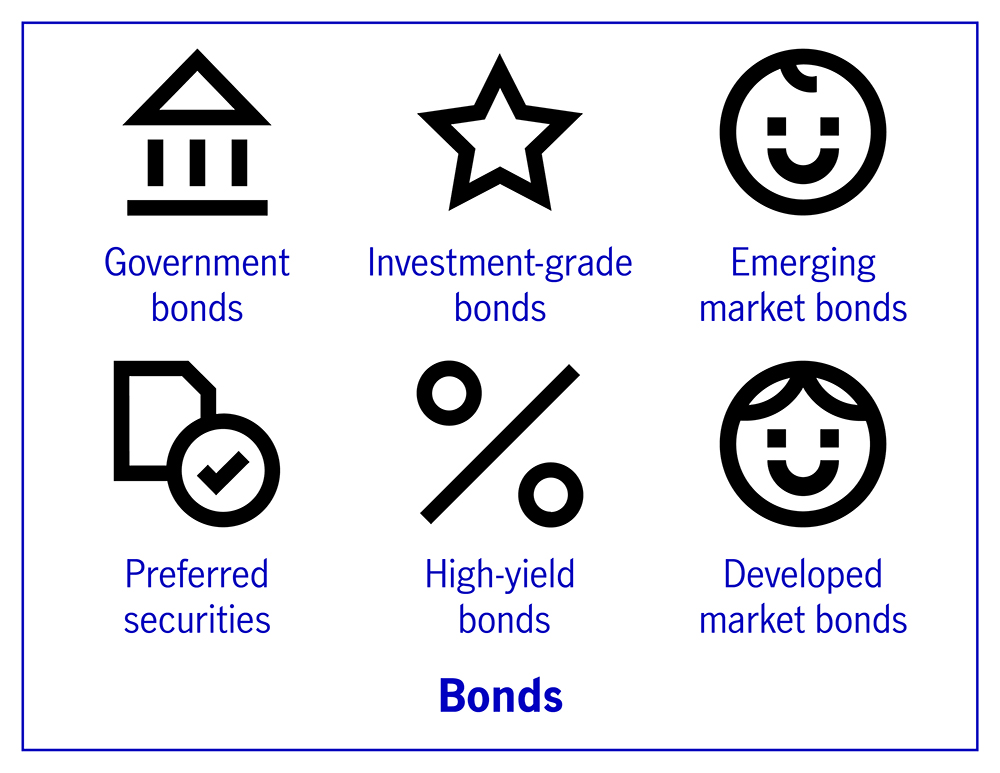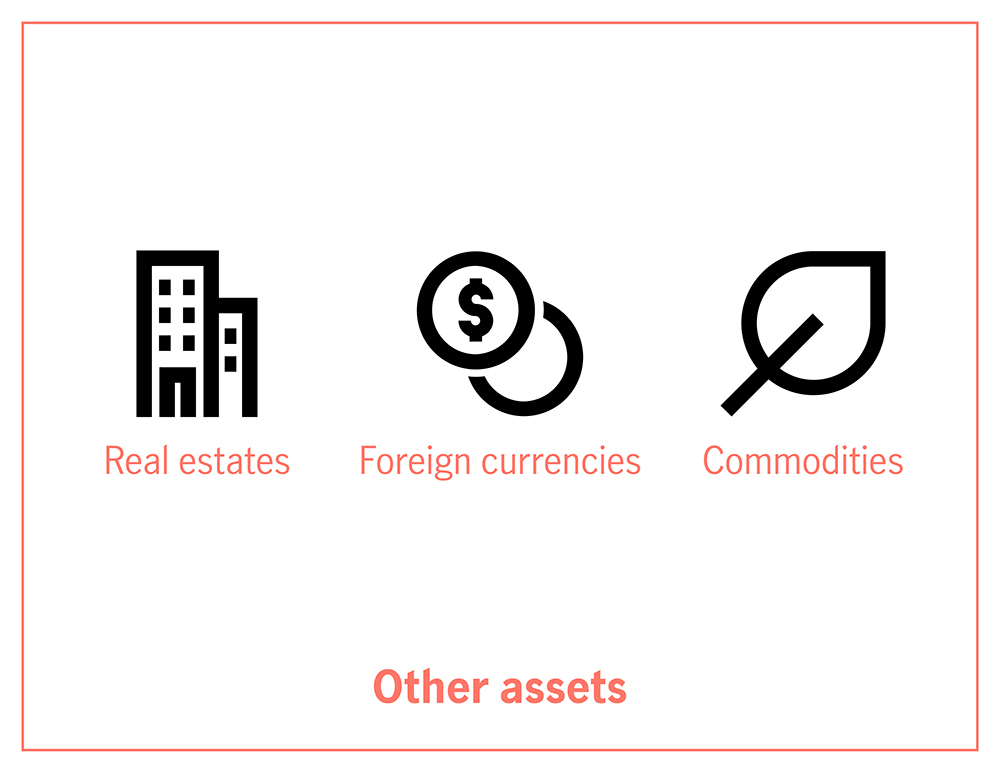
Whether you’re getting married in three to five years’ time, or preparing for a comfortable retirement 30 to 40 years later, it makes sense to grow your savings through a sound financial plan over time. This way, you are better-placed to achieve the desired amount over the target timeframe.
While it may be tempting to dabble in equities, or trade in forex with hopes to make an easy return, they are neither effective nor systematic ways to manage your money. This is especially true when investing over a long period or during periods of economic uncertainty.
To be a step closer in achieving your goals, you may need to construct a portfolio that takes into account asset allocation, risk management and capital appreciation.
Generally speaking, portfolios can be classified into three types – growth, balanced and conservative. The difference between the three lies mainly in the proportion of risk assets (e.g. equities) in the portfolio.
Equities are potentially more volatile. Generally, the higher the proportion of equities in the portfolio, the higher the potential gains (or losses). For the sake of simplicity, we shall focus our discussion on equities and bonds.
Growth portfolio: The key objective of this portfolio is to achieve long-term capital appreciation. To maximise potential returns, assets are allocated mainly into equities, usually of a proportion between 60% and 100%. It is suitable for investors who are more aggressive and have a higher risk tolerance.
Balanced portfolio: With a goal of achieving balanced long-term capital appreciation, asset allocation is not concentrated on just equities or a single asset class. Instead, instruments with lower volatility (such as investment grade bond funds with regular income distribution features, exchange-traded funds (ETFs), money market funds and cash deposits) are used to balance the overall volatility of the portfolio. It is therefore suitable for investors who can tolerate a medium level of risk, and are aiming to strike a balance between risks and returns.
Conservative portfolio: The objective of this portfolio is to seek steady growth and control downside risks. With stability as a key focus, this portfolio type holds a smaller proportion of equities, typically not exceeding 20% to 30%, so as to minimise volatility. Conservative portfolios are suitable for investors who are more conservative and cannot tolerate large investment losses.
Asset ratios in the three aforementioned portfolios are for reference only. These classifications are not standardised; the risk profile of a portfolio depends largely on the largest asset class in the portfolio.
An investor’s investment horizon is different at various life stages, ranging from anything between 3-5 years and 30-40 years. It can also span multiple economic cycles. As shown in the table below, portfolios with a higher proportion of bonds can buffer downside during economic downturns. In other words, it potentially helps investors to better manage downside risks.
However, when the economy recovers, equities tend to outperform bonds due to better corporate earnings, improved corporate and consumer confidence, as well as higher risk appetite in investment markets. As a result, equity markets attract more capital inflows. In this part of the market cycle, the overall return is higher for portfolios with a greater proportion of equities.
Looking at the performance of the MSCI World Total Return (USD) Index and Bloomberg Barclays Global Aggregate Bond Index (USD hedged), the value of growth portfolios rose more than 160% in the last economic upcycle; balanced portfolios holding equal proportions of equities and bonds rose slightly less (approximately 120%) while conservative portfolios with only 20% of equity holdings gained 83%.
Yet when the economy is not doing well, equities often perform worse than bonds and this in turn drags down the portfolio’s overall performance. Growth portfolios lost nearly 30% in the last economic downturn; balanced portfolios, with 30 percentage points more bond holdings than growth portfolios, fell less (approximately 16%) while conservative portfolios with almost 80% holdings in bonds fell around 2%.
In order to effectively manage risks and achieve capital appreciation, investors should consider the different instruments available.
To gain exposure into equities, investors can look into single stock or various equity funds. For example, investors can consider global or regional equity funds, sector-specific equity funds, or even ETFs which track equity asset performance.
It is worth noting that while these instruments belong to the same asset class, their risk levels vary. For example, a single stock or single-market equity fund is generally riskier than a global equity fund.
Similarly, there are also many types of bond instruments. They include government bonds, investment-grade bonds, high-yield bonds, preferred securities2 as well as bonds denominated in different currencies, or from different markets, regions and sectors.
Apart from equities and bonds, investors may add on other assets such as foreign currencies, real estate and commodities into their portfolios according to their actual needs, so as to further balance between risk and return.



There are two ways to construct a portfolio:
Another type of multi-asset fund is “fund-of-funds”, which invests into other funds. By investing in a basket of funds, it may hold up to hundreds of securities, which further helps to diversify risks.
Comparing the two options, the first option is managed by professionals. Therefore, it saves investors the hassle of figuring out the right combination of holdings. It also holds a scale advantage and some of the funds offer access to investment tools used by global retail and institutional investors. This option is relatively easier than managing a portfolio on your own.
If you have any questions about portfolio construction, or any specific requirements, please speak with your financial advisor.
Dollar cost averaging: An easier way to withstand volatile markets
If investors wish to reduce volatility and benefit from long-term growth when the markets move up and down, the passive strategy of dollar cost averaging may be a feasible choice.
Risk Diversification
There is no free lunch. But Risk Diversification comes close in investing. A diversified portfolio was shown to optimize returns with lower volatility in the long run.
Better income – Aim for higher, not the highest
If we focus too much on chasing the highest yield and upfront yield generation, we could suffer from early capital depletion and miss the total return opportunity towards the later stages of the investment journey.
1 Source: Bloomberg, as of 30 June, 2020. Total returns in USD. Equities are represented by MSCI World Total Return (USD) Index; while bonds are represented by Bloomberg Barclays Global Aggregate Bond Index (USD hedged), assuming monthly rebalancing for each portfolio. The periods of economic cycles were based on the US economic cycle stated by the US National Bureau of Economic Research. Past performance is not indicative of future performance. The information above is for reference only. Investors cannot invest directly in an index.
2 Preferred securities are fixed-income instruments with equity-like features.
This material was prepared solely for informational purposes and does not constitute a recommendation, professional advice, an offer, solicitation or an invitation by or on behalf of Manulife Investment Management to any person to buy or sell any security. This material should not be viewed as a current or past recommendation or a solicitation of an offer to buy or sell any investment products or to adopt any investment strategy. Nothing in this material constitutes investment, legal, accounting or tax advice, or a representation that any investment or strategy is suitable or appropriate to your individual circumstances, or otherwise constitutes a personal recommendation to you. Past performance is not an indication of future results.
Dollar cost averaging: An easier way to withstand volatile markets
If investors wish to reduce volatility and benefit from long-term growth when the markets move up and down, the passive strategy of dollar cost averaging may be a feasible choice.
Risk Diversification
There is no free lunch. But Risk Diversification comes close in investing. A diversified portfolio was shown to optimize returns with lower volatility in the long run.
Better income – Aim for higher, not the highest
If we focus too much on chasing the highest yield and upfront yield generation, we could suffer from early capital depletion and miss the total return opportunity towards the later stages of the investment journey.